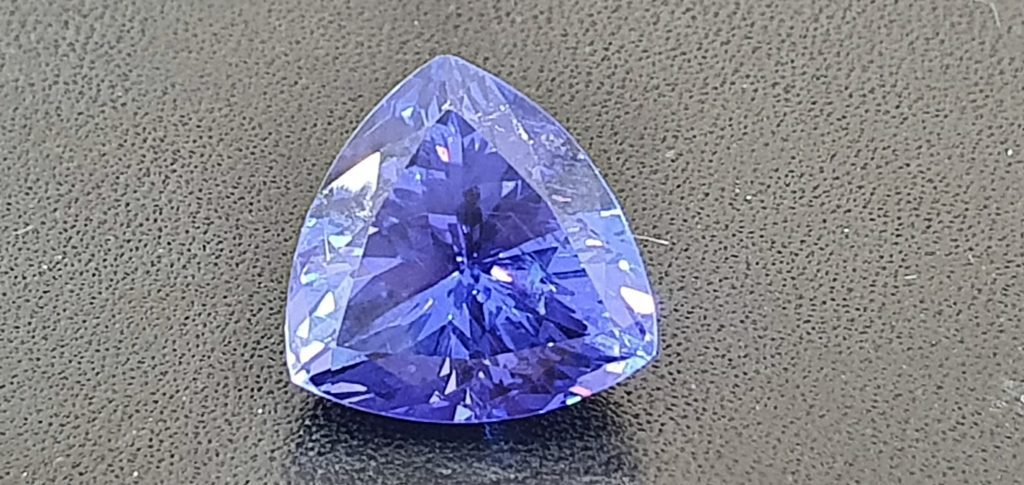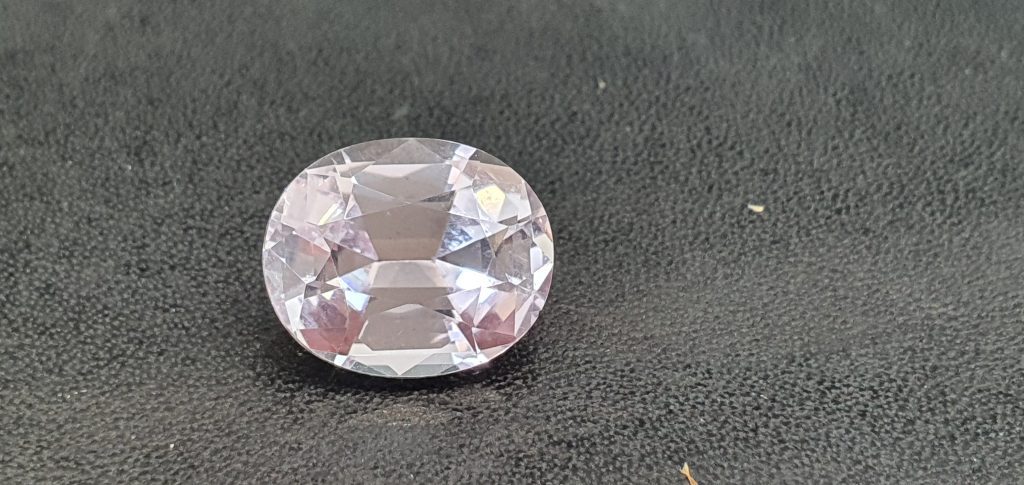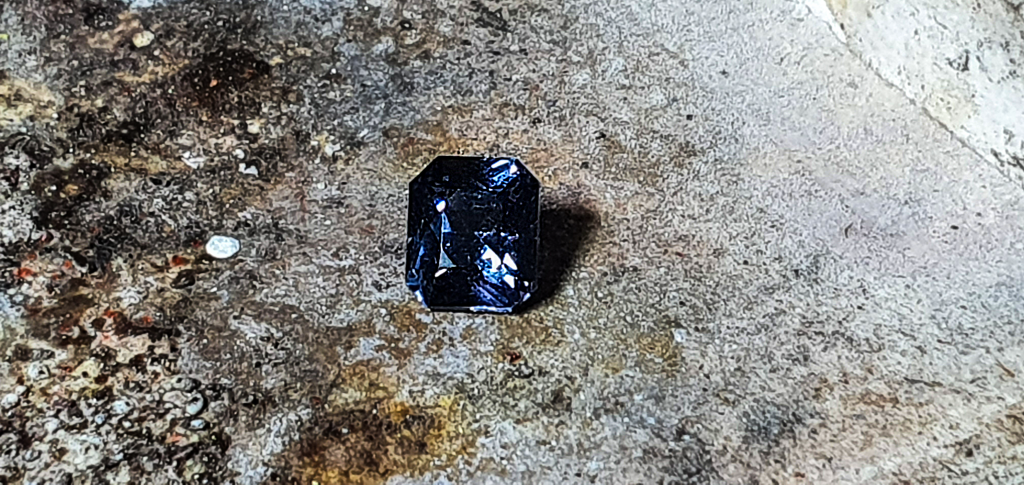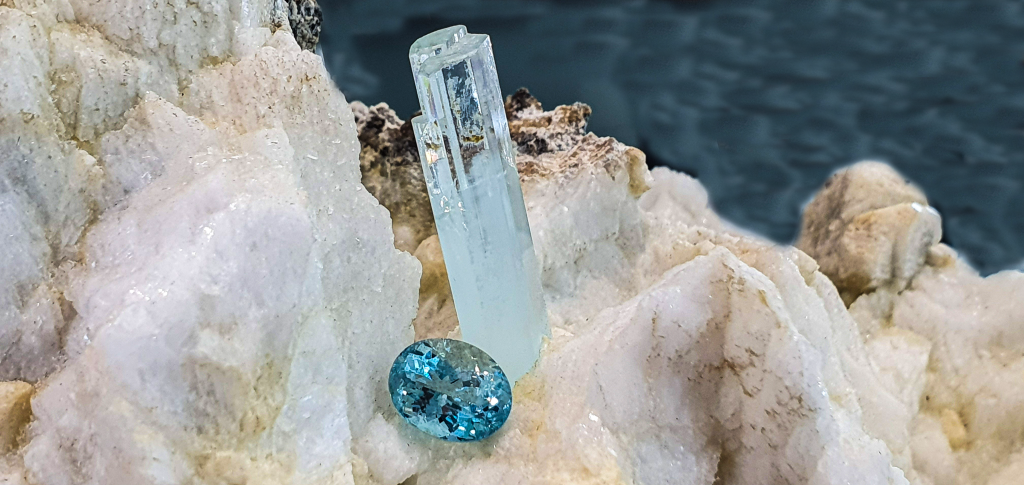Gemstones of Ojamie
Throughout history, gemstones have been prized for their beauty, rarity, and symbolic significance. From the sparkling diamonds of India to the deep blue sapphires of Sri Lanka, each gemstone has a unique story to tell. At Ojamie, we are passionate about providing our customers with the most exquisite gemstones from around the world. Our collection features a range of precious and semi-precious stones, each carefully selected for their exceptional quality and vibrant color. In this article, we will explore some of the world’s most remarkable gemstones, their characteristics, and how they relate to the jewels we offer at Ojamie. Whether you are a collector, a jewellery enthusiast, or simply appreciate the beauty of fine gemstones, we hope you will find this article insightful and inspiring.

Tanzanite, a gemstone known for its captivating blue-violet hue, has a fascinating history. Discovered in 1967 in Tanzania, it quickly gained popularity due to its striking beauty. What makes tanzanites truly remarkable is their rarity. Found exclusively in the foothills of Mount Kilimanjaro, this gemstone is estimated to be 1,000 times rarer than diamonds. Tanzanite’s unique colour, ranging from deep blue to violet, is a result of pleochroism, displaying different hues from various angles. The gem’s colour can also be enhanced through heat treatment, intensifying its stunning blue shade. Its scarcity, mesmerizing colour, and captivating history have made tanzanite a highly sought-after gemstone.
Kunzite, a mesmerizing pink gemstone, possesses intriguing qualities that make it truly captivating. Discovered in the early 20th century, kunzite is named after the renowned gemmologist George Frederick Kunz. One of its most remarkable features is its delicate pastel hues, ranging from soft pink to lilac. Its colour is often associated with feelings of love, tenderness, and emotional healing. Kunzite is renowned for its pleochroism, meaning it exhibits different colours when viewed from different angles. This gemstone is highly prized for its transparency, allowing light to pass through and create a beautiful luminous effect. One notable celebrity who famously wore kunzite is the actress Elizabeth Taylor.

Emeralds, the lush green gemstones, are a variety of beryl. Their captivating colour comes from traces of chromium and vanadium. In ancient times, emeralds were revered by cultures like the Egyptians and Incas for their spiritual significance. Cleopatra was known to adore emeralds. These gems are typically found with inclusions called “jardin,” which resemble a garden due to their natural patterns. Colombia is a major source of high-quality emeralds, but they’re also found in Zambia, Brazil, and other regions. The value of an emerald often depends on its colour, clarity, size, and overall quality, with deep green and minimal inclusions being most prized.
Spinel, historically confused with other gemstones, carries a fascinating legacy. It was often mistaken for rubies and sapphires, gracing royal jewels like the “Black Prince’s Ruby” in the British Imperial State Crown. Spinel exhibits a diverse range of colours, including red, pink, blue, and even black. Notably, the “Black Prince’s Ruby” was reidentified as spinel. Unlike many gems, spinel doesn’t display pleochroism; it’s isotropic. Found in regions like Myanmar, Sri Lanka, and Vietnam, spinel is cherished for its brilliance, durability, and vivid colours, making it a distinct and enchanting gemstone with a rich history.


Aquamarine, a captivating blue gem, belongs to the beryl family. Its name originates from Latin, meaning “water of the sea,” inspired by its serene blue hues. This gem was historically valued for its connection to safe voyages, often used by sailors as a protective charm. Mined in countries like Brazil, Nigeria, and Madagascar, aquamarine’s colour can range from pale blue to deep blue-green. Its relative hardness and durability make it well-suited for various types of jewellery. Heat treatment is commonly applied to enhance its colour. Renowned for its beauty and historical significance, aquamarine continues to be cherished for its unique charm and vivid shades.
Imperial topaz, a rare and exquisite gem, is cherished for its warm tones, ranging from golden yellow to orange. Its name is rooted in Russian history, linked to the Tsars of the 19th century. This gem was once exclusive to the Russian royal family, hence the name “imperial.” Found predominantly in Brazil, it’s often associated with positivity and abundance. Imperial topaz can display pleochroism, showing different colours from various angles. Its exceptional hardness makes it suitable for various jewellery pieces. Despite its relative scarcity, its captivating hues and royal history have maintained its allure, making imperial topaz a sought-after and distinguished gem in the world of jewellery.
Tsavorite garnet, a vibrant green gem, is a rare and alluring member of the garnet family. Named after Kenya’s Tsavo National Park, where it was discovered in the 1960s, this gem boasts a rich green hue reminiscent of emeralds. Its brilliance and durability make it a desirable choice for jewellery. Tsavorite garnet’s colour is owed to traces of vanadium and chromium. Unlike other gems, it rarely undergoes treatment. Mined in select African countries, including Kenya and Tanzania, its scarcity adds to its appeal. Its unique colour, African origin, and limited availability have propelled Tsavorite garnet into the spotlight, captivating gem enthusiasts and collectors alike.
Green diamonds, among the rarest coloured diamonds, obtain their hue from natural exposure to radiation. Their mesmerizing shades range from pale mint to deep forest green. The coloration process involves the presence of nitrogen and irradiation. The Gemmological Institute of America (GIA) classifies green diamonds into two categories: naturally occurring and those modified by treatments. The Dresden Green Diamond, a famous historical gem, is a vivid green diamond with a notable history dating back to the 18th century. Due to their scarcity and unique colour, green diamonds are highly sought-after in the world of jewellery, making them a coveted and intriguing choice for collectors and enthusiasts.
Pink diamonds, exceptionally rare and captivating, are among the most sought-after gemstones. Their unique colour comes from intense pressure and distortion during formation. The Argyle Diamond Mine in Australia was a prominent source of pink diamonds, but it closed in 2020, further enhancing their scarcity. The Gemmological Institute of America (GIA) grades pink diamonds based on colour intensity: faint, very light, light, fancy light, fancy, fancy intense, fancy vivid, and fancy deep. The “Pink Star,” a 59.60-carat pink diamond, holds the record for the most expensive gemstone ever sold at auction. Their exquisite beauty and limited supply continue to make pink diamonds highly prized and esteemed in the realm of luxury gems
Sapphires, enchanting gemstones, belong to the corundum family and are renowned for their deep blue hues, though they come in various colours except red (which is classified as a ruby). Their allure is due to both their colour and hardness, second only to diamonds. Sapphires have historical significance, with ancient cultures believing they symbolized wisdom and protection. The largest sapphire is part of the British Crown Jewels, known as the “Star of India.” Sri Lanka, Myanmar, and Kashmir are notable sources. The “Padparadscha” sapphire, with its delicate pink-orange hue, is especially treasured. Sapphires’ enduring popularity and symbolism make them cherished choices for engagement rings and fine jewellery.


